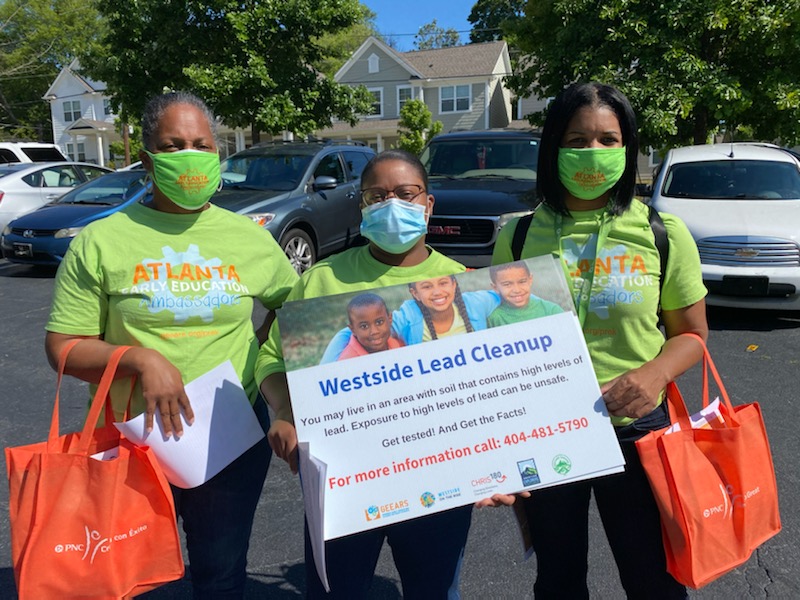Addressing Childhood Lead Exposure on a State and Federal Level

By: GEEARS for Saporta Report
Lead poisoning isn’t just a problem in Flint, Michigan, and toxic lead levels aren’t just found in drinking water. Over the last year, GEEARS: Georgia Early Education Alliance for Ready Students has been working with community leaders on the Westside of Atlanta, where lead slag found in a grandmother’s garden soil has prompted the Environmental Protection Agency (EPA) to begin remediating several neighborhoods. Hearing from families about the effects of lead on their children’s brain development has steeled our commitment to fighting for environmental justice for all of Georgia’s children.
The Georgia Department of Public Health reports that one in 20 children in the state has elevated lead levels. Children are at a higher risk for lead poisoning in 12 Georgia counties: Bibb, Chatham, Cobb, DeKalb, Fulton, Glynn, Gwinnett, Hall, Richmond, Sumter, Thomas and Troup. Moreover, there is a lead risk in just under 10% of Georgia’s housing stock. There are disproportionate rates of environmental poisoning in Black and Brown communities.
There is no safe level of lead exposure for children. Exposure to lead can seriously harm a young child’s developing brain causing learning and behavior problems and slowed growth and development.
It’s estimated that preventing childhood lead poisoning nationwide would result in $84 billion in potential future benefits, including nearly $18.5 billion for the federal government and $9.6 billion for states in the form of increased revenue and savings to the health care, education, and criminal legal systems.
Thankfully, there are efforts at both the federal and state levels to begin to address and prevent childhood lead poisoning. Here in Georgia, a House Study Committee on Childhood Lead Exposure, chaired by Representative Katie Dempsey from Rome, is wrapping up meeting to learn about these issues and consider recommendations aimed at preventing future harm.
GEEARS has shared recommendations with the study committee that focus on prevention, screening and surveillance, and remediation and support. Among these recommendations are the call to promote lead testing at regular intervals for young children and pregnant women, reduce the blood lead level threshold for lead abatement activities from 15 micrograms/deciliter to align with CDC recommendations, and invest in child care with wrap around services and Babies Can’t Wait, Georgia’s Early Intervention program for young children who experience developmental delays.
At the federal level, the Infrastructure Bill and the Build Back Better framework currently under discussion take powerful steps toward ending childhood lead poisoning and ensuring that lead’s toxic legacy will be eradicated from hundreds of thousands of older homes across the United States. The Build Back Better framework currently contains $150 billion in funding which, if passed, will be the single largest and most comprehensive investment in affordable housing in our country’s history. These critical investments in communities with the lowest incomes will create healthy, safe, and energy-efficient homes and will have an immediate positive impact on health and racial equity.
Action by the Georgia General Assembly and Congress will ensure that children not yet born can thrive, free of the damaging effects of lead and other environmental poisons. We owe it to the children of Georgia to clean up the mistakes of the past.